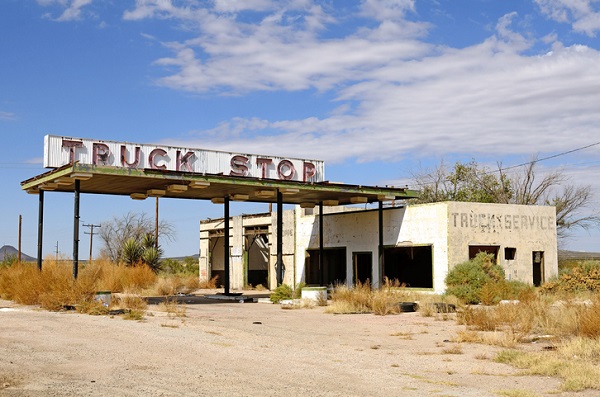
You’ve seen them on virtually every major highway in North America, but what’s the history behind them? Considering the rapid amount of change the trucking industry has experienced over the years, it’s not surprising that truck stops have evolved as well. According to the 2017 National Truck Stop Directory more than 6,500 truck stops exist in both Canada and the United States.
Truck stops have a more fascinating history behind them than you’d think, and they go all the way back to the time of people riding horses to deliver mail. Here’s a breakdown of the history of truck stops for dispatch students to learn about.
The Origins of Truck Stops During the Mid to Late 1800s
At the start of the 1860s during the time of the Old West, the Pony Express was a popular mail and delivery service between the U.S.’ Pacific and Atlantic coasts—in fact, it was the most direct form of communication between the east and west prior to the advent of the telegraph.
Why is this relevant? The modern truck stop has its roots in the Pony Express, as riders would make it to these stops to rest and change horses whilst on their way to a different part of the country. Once it became more common for stagecoaches to be a means of transportation for people, stagecoach stations would offer passengers a place to rest and eat. These would predate trains, and eventually automobiles.
Truck Stops Would Evolve Even More During the 20th Century
There would be an increase of trained truck drivers on the roads in the wake of World War II. Furthermore, there would be an increased reliance by consumers on truck drivers to deliver goods. As the 20th century progressed, truck stops would open to help travellers refuel, eat and stretch their legs during their trips, though most of these would be fairly simple mom-and-pop diners. In the U.S., truck stops would start seeing even bigger business as a result of both the increase in size and number of trucks, as well as President Dwight Eisenhower signing the Federal Interstate Highway Act in 1956.

This act would lead to the creation of over 41,000 miles (close to 66,000 km) of new interstates. Around the same time, Canada was also building the Trans-Canada Highway, the longest highway of its kind in the world. Students in a dispatch course should know that these developments would lead to the construction of stops by both major oil companies and smaller businesses. In 1972, the first-ever truck stop chain, Truckstops of America (now TravelCenters of America), would begin operations.
What Students in a Dispatch Course Should Know About Truck Stops Now
As time went on, truck stops would offer even more services to travellers, such as gift shops, movie theatres, and even casinos, barbershops, and reptile lagoons. The 1980s are known for being the decade when truck stops grew into full-on plazas, as corporations sought to improve upon the negative reputation truck stops once had.
While many of them are now associated with major chains, some independent stops are still around. Students doing their dispatch training in Toronto should know that older truck stops are starting to decline in terms of activity due to the influence of bigger chains. Nonetheless, truck stops continue to serve an important purpose for truck drivers all over the world.

Want to take a dispatching program in Toronto?
Contact Automotive Training Centres for more information!

